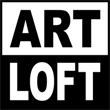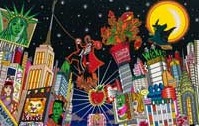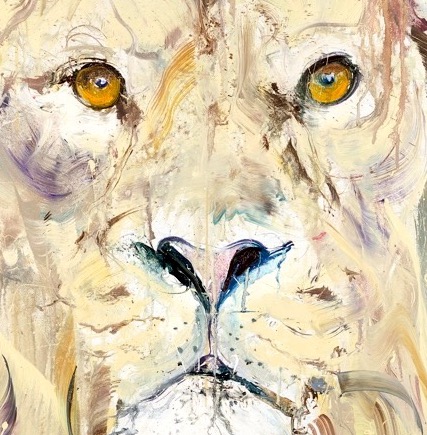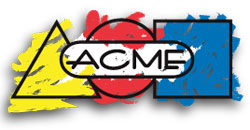 James F. Gill vor seinem Marilyn Triptych, 1962
James F. Gill vor seinem Marilyn Triptych, 1962(English text further below)
James Francis Gill (geb. 1934 in Tahoka, Texas) ist einer der letzten noch lebenden US-amerikanischen Pop Art Künstler der ersten Stunde. Bereits im November 1962 erreichte Gill internationale Anerkennung, als das Museum of Modern Art in New York sein dreiteiliges Marilyn Monroe Bild "Marilyn Triptych" in seine Sammlung aufnahm. Seine Zeichnungen "Laughing Women in Car" und "Close-up" wurden vom Museum of Modern Art zwischen Zeichnungen von Picasso und Odilon Redon gezeigt.
Damals sahen viele Zeitgenossen in seinen Werken einen tiefgründigen und vielschichtigen Sinn, mehr als die Pop Art auszudrücken beabsichtigte. ""Gill ist ein prominenter Künstler der Pop Art, obwohl er zu sehr Maler ist und mit seinen Themen in einer sehr emotional aufgeladenen Art umgeht, um nur als ein Pop Art Künstler zu gelten"", schrieb der Los Angeles Times Art Editor Henry J. Seldis in der Ausgabe vom 8. November 1965.
1967 zeigte die ?Sao Paulo 9 "Environment USA: 1957 - 1967" in Brasilien Gills Kunstwerke zusammen mit Künstlern wie Andy Warhol und Edward Hopper.
Diese Ausstellung unterstrich Gills Platz in der internationalen Welt der Kunst. Seine Kunstwerke wurden in die Sammlungen bedeutender Museen aufgenommen. Durch persönliche Freundschaften und Bekannt-schaften mit Tony Curtis, Kirk Douglas, John Wayne, Jim Morrison, Martin Luther King oder Marlon Brando ist Gill als Künstler Zeitzeuge einer ganzen Generation geworden. Diese Persönlichkeiten prägten auch inhaltlich das Werk Gills, das er durch verschiedene Techniken und Kompositionen vermittelt.
Ab etwa 2007 beginnt Gills späte kreative Phase, in der er sich im Gegensatz zu den im frühen Werk dominierenden politischen Motiven wieder verstärkt auf die Darstellung klassischer Pop Art-Ikonen wie John Wayne, Paul Newman oder Marilyn Monroe konzentriert.
Die Kunst von James Gill ist heute ist eine Verschmelzung von Realismus und Abstraktion. Fotos sind weiterhin Grundlage seiner Kunstwerke. Die Bildkomposition seiner Gemälde legt er nun oft am Computer fest und arbeitet dabei bewusst mit Montageeffekten, die er als "Metamage" oder "Pop Surrealism" bezeichnet.
 James Gill in front of his Marilyn Triptych, 1962
James Gill in front of his Marilyn Triptych, 1962James Francis Gill was born in Tahoka, Texas in 1934. He attended San Angelo High School. After a tour of duty with the marines, he attended San Angelo College before completing his formal education at the University of Texas in Austin.
From 1956-1960 Gill studied architecture and worked as an architectural designer in Midland/TX and Odessa/TX. From 1960-1961 he studied at University of Texas, Austin/TX on a painting scholarship.
He left Texas in 1962 and moved to Los Angeles, California. The support he received from his first dealer, Felix Landau, was pivotal to Gill?s early entrance into important collections, both private and public. Stars of film and music, art lovers and businesspeople collected artworks of James Francis Gill in the 1960s. Gill was commissioned to paint the covers of well known print media such as the TIME magazine. Hollywood stars like John Wayne and Tony Curtis requested to be painted by him. During his stay in Los Angeles, paintings and drawings were finding their way into the collections of the Museum of Modern Art, New York, the Art Institute of Chicago, the Whitney Museum of American Art, as well as many West Coast museums. Major national corporations, such as the Mead Corporation and Time-Life Corporation, were also purchasing his paintings for their collections.
In 1967, the ?Sao Paulo 9 - Environment United States: 1957-1967? in Brazil showed Gills works with artists such as Warhol, Robert Indiana, Jasper Johns, Roy Lichtenstein, Robert Rauschenberg, Claes Oldenburg and Edward Hopper.
This exhibition led to Gills breakthrough in the international art world. His works were included in the collections of major museums. Now, Gill was at the peak of his career, and very popular in the Pop Art scene. But many contemporaries saw a profound and complex sense in his works, expressing more than Pop Art originally intended.
In 1972, Gill went surprisingly into a self-imposed exile, in the expectation of being able to maintain a kind of long-distance relationship with the art scene. He wanted to develop his artistic expression, without being delivered to the constraints of the material world. Gill never stopped to paint, but didn´t show his works to the public until 1995.
His life changed dramatically when the art magazine of the Smithsonian American Art Museum called him up and asked for an interview. This marked the beginning of his rediscovery and guided to the point that numerous galleries and museums became aware of him again. Around 1987, Gill started to work with the tools of computer design, using ?the computer and the printer as a drawing tool?.
In 2005, a retrospective was held in his hometown San Angelo at the Museum of Fine Arts. Around 2007, Gills late creative phase began, in which - in contrast to the dominance of political motives in the early works - Gill increases his focus on the presentation of classic Pop Art icons such as Marilyn Monroe, Liz Taylor, John Wayne and Paul Newman.
 ART LOFT Gallery | Established 1987
ART LOFT Gallery | Established 1987 







